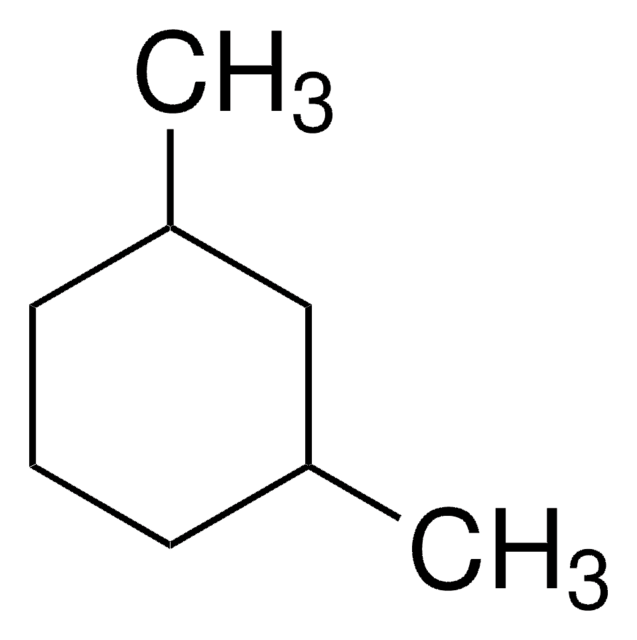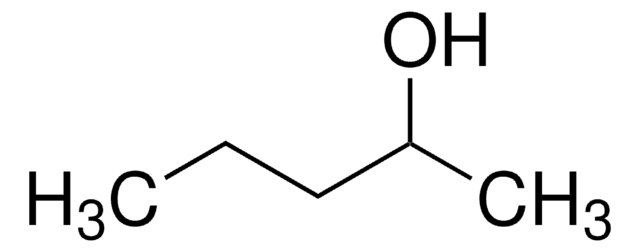152463
2-Methyl-2-butanol
ReagentPlus®, 99%
Synonym(s):
tert-Amyl alcohol, tert-Pentyl alcohol
About This Item
Recommended Products
vapor density
3 (vs air)
Quality Level
vapor pressure
12 mmHg ( 20 °C)
product line
ReagentPlus®
assay
99%
form
liquid
autoignition temp.
819 °F
expl. lim.
9 %
refractive index
n20/D 1.405 (lit.)
pH
6.0 (20 °C, 118 g/L)
bp
102 °C (lit.)
mp
−12 °C (lit.)
density
0.805 g/mL at 25 °C (lit.)
SMILES string
CCC(C)(C)O
InChI
1S/C5H12O/c1-4-5(2,3)6/h6H,4H2,1-3H3
InChI key
MSXVEPNJUHWQHW-UHFFFAOYSA-N
Looking for similar products? Visit Product Comparison Guide
Related Categories
General description
Application
Legal Information
signalword
Danger
Hazard Classifications
Acute Tox. 4 Dermal - Acute Tox. 4 Inhalation - Eye Dam. 1 - Flam. Liq. 2 - Skin Irrit. 2 - STOT SE 3
target_organs
Central nervous system, Respiratory system
Storage Class
3 - Flammable liquids
wgk_germany
WGK 1
flash_point_f
68.9 °F - closed cup
flash_point_c
20.5 °C - closed cup
ppe
Eyeshields, Faceshields, Gloves, type ABEK (EN14387) respirator filter
Choose from one of the most recent versions:
Already Own This Product?
Find documentation for the products that you have recently purchased in the Document Library.
Customers Also Viewed
Protocols
-Butanol; 2-Methyl-2-butanol; 2-Methyl-1-butanol; 3-Pentanol; 1-Butanol; 2-Methyl-1-propanol; 2-Pentanol, 98%; 3-Methyl-1-butanol; 1-Propanol
Our team of scientists has experience in all areas of research including Life Science, Material Science, Chemical Synthesis, Chromatography, Analytical and many others.
Contact Technical Service













